
Article contents

Pension tax relief for sole traders is pretty simple, any money you save into your self-employed pension will get a 25% bonus from the government, automatically added to your pension pot (to refund 20% tax paid on your earnings). And if you pay 40% or 45% tax, you can claim this back via your Self Assessment tax return at the end of the tax year. If you pay into your pension from a limited company, you can also reduce your Corporation Tax bill (so save up to 25% more).
Sole trader? Your pension is in your own hands (rather than an employer handling it for you with a full time job), but don’t worry – we’ve got you covered. The good news – you could save a small fortune for your future if done sensibly.
Nuts About Money tip: although you probably don’t right now, if you did run your business through a limited company (perhaps in the future), you could save even more tax too – we’ll run through it later just so you’re in the know should you switch your business to a limited company in the future.
Anyway, here's everything you need to know about tax relief, and how to save for your future.
Tax relief is where you get the money back from the government, that you should otherwise pay, or have paid, in tax. As simple as that. With pensions, you’re able to save into them tax-free – so you get tax relief on your income (Income Tax).
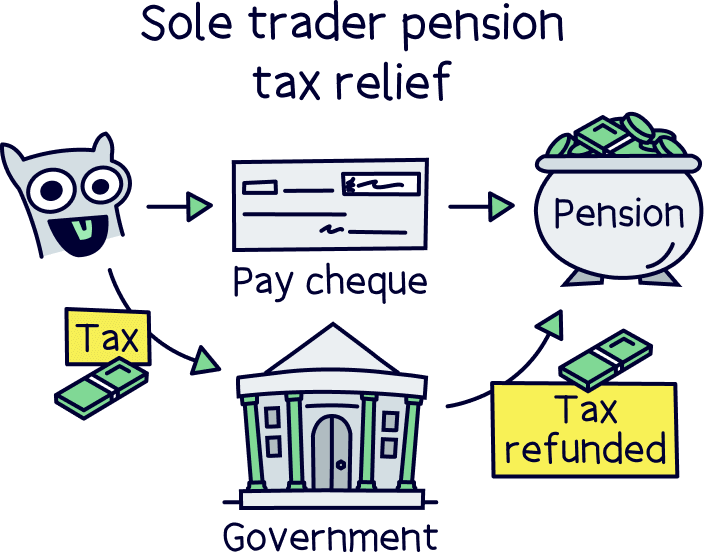
If you were employed, you wouldn't pay tax in the first place (e.g. no tax paid on your payslip). Or, if you've contributed to your pension through your bank account, the government will refund some of the tax money straight into your pension account. And finally, it could also be deducted from your overall tax bill at the end of the tax year (more on that later).
To help you save more for retirement, the government gives you tax relief on your pension, which includes both employed people, and self-employed people – but with employed people, their pension contributions are taken from their salary before any tax is taken on it.
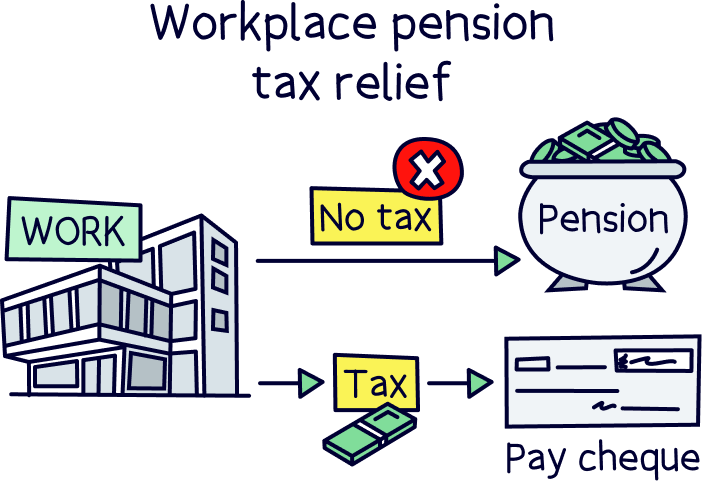
With self-employed people, you can’t pay into your pension from your payslip before tax like employees – you’ll pay tax at the end of the tax year, so it works a bit differently…
For basic rate tax, which is Income Tax paid at 20%, and applies on earnings between £12,570 and £50,270, you’ll get the tax relief back as a bonus added to your pension pot, whenever you contribute money to it.
This takes the form of a 25% bonus when you add cash (it sounds odd but the maths works out). So, if you add £80, you’ll get an extra £20 added to your pension pot from the government.
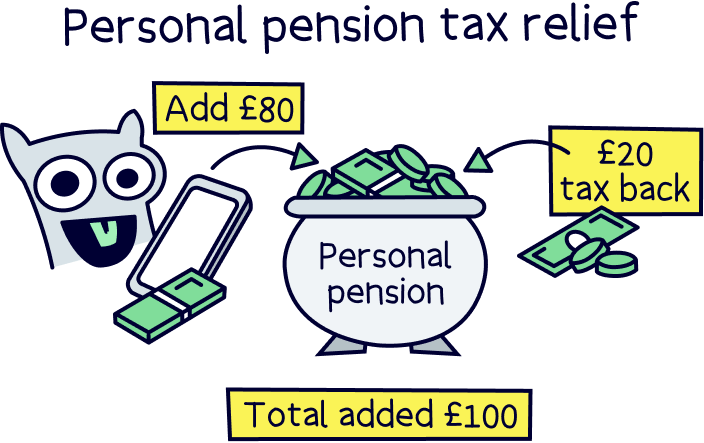
Your pension provider handles this tax refund, and it normally takes around 6-8 weeks. This is technically called ‘relief at source’.
For higher rate tax, which is 40%, and applies to earnings between £50,270 and £125,140, you’ll continue to get the 20% tax relief when you add money to your pension. But you’ll also be able to get an extra 20%, either taken off your tax bill at the end of the year, or as a cash refund. Pretty great right?
And this works exactly the same for additional rate tax, which is 45% tax, and applies to earnings above £125,140.
All pretty great right?
To claim any higher rate or additional rate tax back, you simply include your pension contributions on your Self Assessment tax return. Which you’ll either do yourself, or your accountant will do at the end of every tax year (April 6th to April 5th the following year). If you need help with your tax return speak to our friends at Taxfix¹, their service is rated 5*.
PensionBee is our top pick, it’s easy to use and has low fees. Plus, get £50 added to your pension for free.
If you’re working for yourself through a limited company, Or are even running a company with a few or lots of employees, you’re in for a treat. You can save even more in tax.
If you make contributions to your pension, or your employee’s pensions, from your limited company (from the business bank account), they will be classed as employer contributions, rather than your own personal contributions, which means they’ll count as a business expense.
This means they will reduce your Corporation Tax bill (tax on profits), which can be from 19% to 25% of your profit per year. So you could end up saving a small fortune in addition to the tax relief you already get (the pension tax relief).
You also won't pay any personal tax as your contributions from the company will go straight into your pension pot.
Adding money into your pension pot from your limited company also means you can add up to £60,000 per year into your pension pot, even if you pay yourself less (if you paid in from your personal money, you can only save as much as your total income each year, or £60,000, whichever is lower).
However, there is one thing to mention – contributions from your limited company to your pension pot need to be reasonable and for work reasons – so if you haven’t made a profit, and end up paying a lot of money into your pension, it’s probably not reasonable.
Note: a limited company is where you set up a new legal entity (a legal thing) to run a business, rather than doing it all through your own name (called being a sole trader).
There are some limits to be aware of, and the main one is how much you can actually pay into your pension pot each tax year, which is either your total annual income, or £60,000, whichever is lower. This is called your annual allowance.
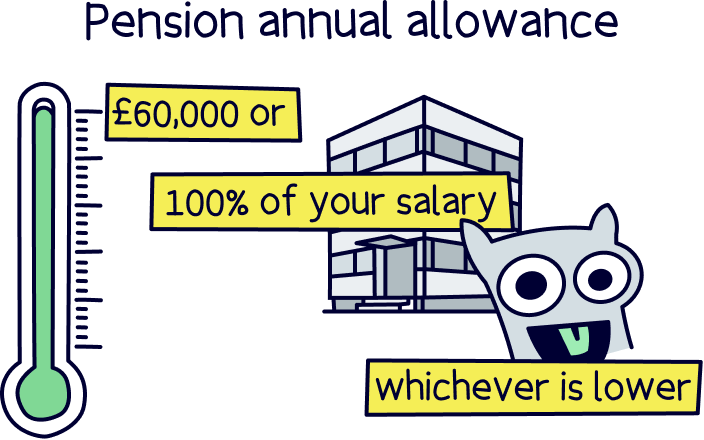
Note: if you are paying into your pension from a limited company, then only the £60,000 limit applies.
However, you can also use your previous 3 years allowance if you haven’t used them up (with this year's allowance that's 4 years in total). So, if you haven’t used your allowance up for last year, you could use that up in this tax year too, and the same for the previous years.
However, you need to have had a pension open during the years you want to use, and you can only save as much in total as you earn in the current tax year (unless paying in from a limited company). This is called the carry forward rule.
Sole trader pensions sound pretty great right? There’s loads of free cash back from the government via tax relief.
If you aren’t saving into a pension already, you probably should be – you’ll need a very hefty pension pot these days for a comfortable retirement, and being self-employed, it’s all down to you (there’s no help from your employer). Here’s our guide to how much you’ll need in your pension pot to learn more, or check out our pension calculator.
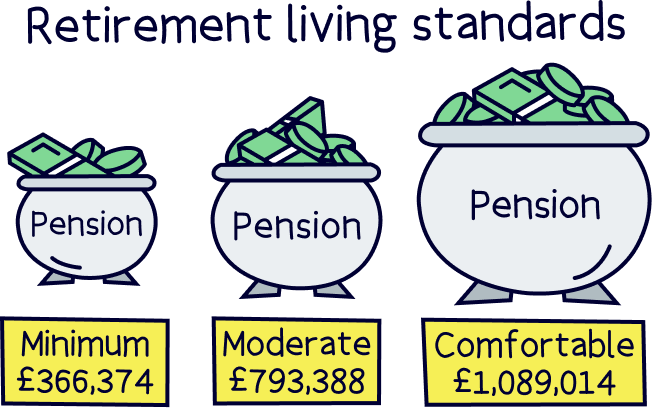
The good news is that getting yourself set up with a pension is easy, and you can do it online in a few minutes.
What you need to do is set up a personal pension, which is a type of private pension, meaning it’s a pension in your name (private to you), rather than the government pension (the State Pension), which you’ll probably get at State Pension age (currently 66), as long as you’ve paid at least 10 years worth of National Insurance contributions, but 35 years to get the full amount.
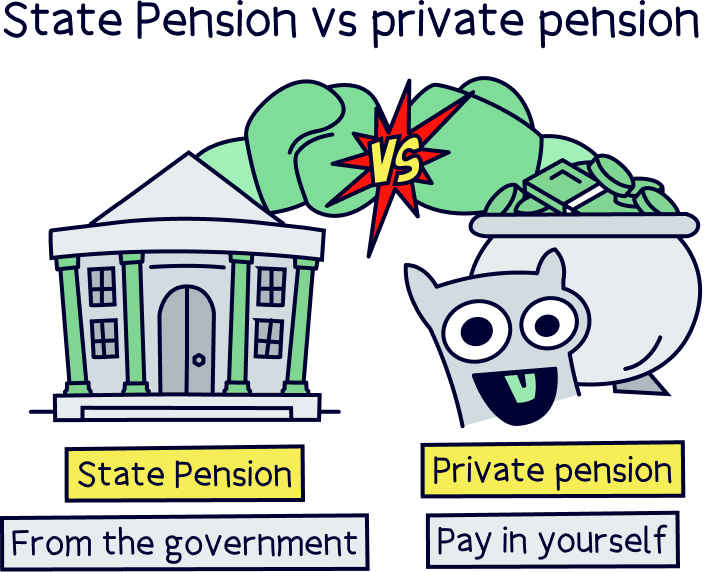
Nuts About Money tip: you'll need to save into a personal pension alongside receiving the State Pension, in order to build a comfortable retirement.
Not sure where to get one? We've done the hard work and researched all the best pensions for self-employed people, and here they are:
Get £50 added to your pension



PensionBee is our recommended provider – they’ve thought of everything.
Their 5 star rated app (and website) makes it easy to set up and use. You can open a brand new pension, or transfer your existing pensions across (they’ll handle all the paperwork).
Simply pick from an easy to understand range of pension plans, and that’s it, the experts manage everything from there.
It’s low cost, with one simple annual fee. The customer service is excellent, and you’ll get a dedicated account manager for any questions you might have.

And, when the time comes to retire, withdrawing from your pension is easy too.
You can also use them if you're self-employed or a company director.
Great app



A great and easy to use pension. Add money from your bank or combine old pensions into one, (they’ll find lost pensions too).
The customer service is excellent, with support based in the UK.

Beach is an easy to use pension app (and easy to set up), where you just add money and the experts handle everything. It’s all managed on your phone with a great app, and you can see your total pension pot whenever you like.
If you’ve got lost or old pensions, Beach can also find them and move them over too, so you can keep all your retirement savings in one place, and never have to worry about losing them in future.
You’ll get an automatic 25% bonus on the money you add to your pension pot from your bank account (tax relief from the government), which refunds 20% tax on your income, and if you pay 40% or 45% tax, you’ll typically be able to claim the extra back too.
The pension plan (investments) are managed by experts, who are the largest investment company in the world (BlackRock). And they consider things like reducing climate change, meaning your savings could make the world a little better in future too.
You can also save and invest alongside your pension with an easy access pot (access money in around a week), designed for general savings, with the investments managed sensibly by experts too. And money made can be tax-free within an ISA.
Fees: a simple annual fee of up to 0.73% (minimum £3.99 per month).
Minimum deposit: £25
Customer service: excellent
Pros:
Cons:
PensionBee is our top pick, it’s easy to use and has low fees. Plus, get £50 added to your pension for free.
When you retire, or start wanting to take money out of your pension pot – which you can do at age 55 (57 from 2028), 25% of your pension will be completely tax-free.
You can take it as a tax-free lump sum if you like, or when you withdraw from it regularly, 25% of each withdrawal will be tax-free.
With the remaining 75%, you’ll be taxed just like your income now, so pay Income Tax on it. However, you’ll still get the personal allowance of £12,570 per year before you need to pay any tax.
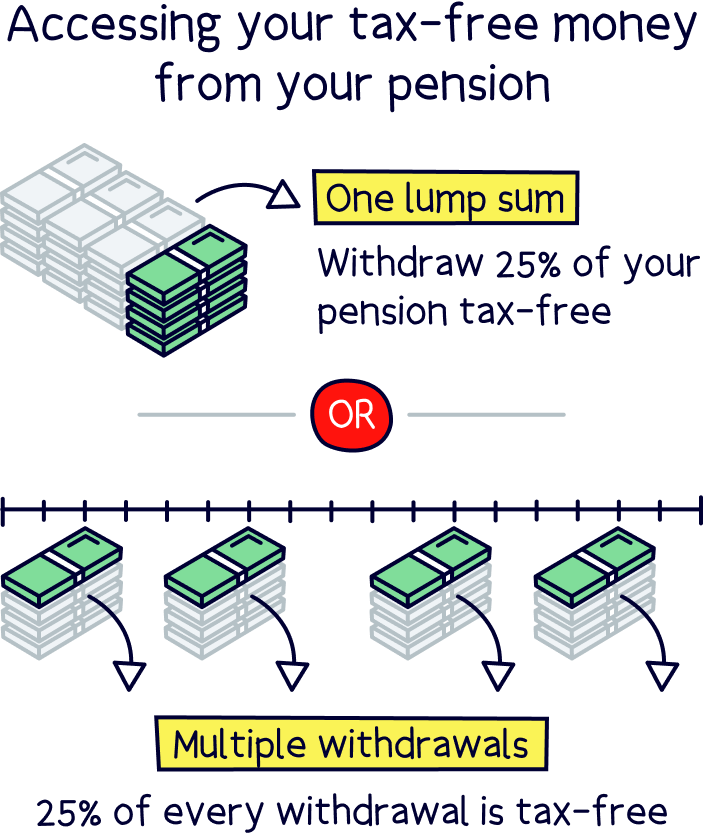
Note: if you have a very large pension pot, over £1,073,100, only the first £268,275 will be tax-free.
There’s two main types of withdrawing your pension, you can either leave it where it is, and simply withdraw from it as and when you like, called pension drawdown. Or, you can buy an annuity with your pension pot, which is a guaranteed income for the rest of your life, or for a set number of years. To learn more, here’s our guide to drawdown vs annuity.
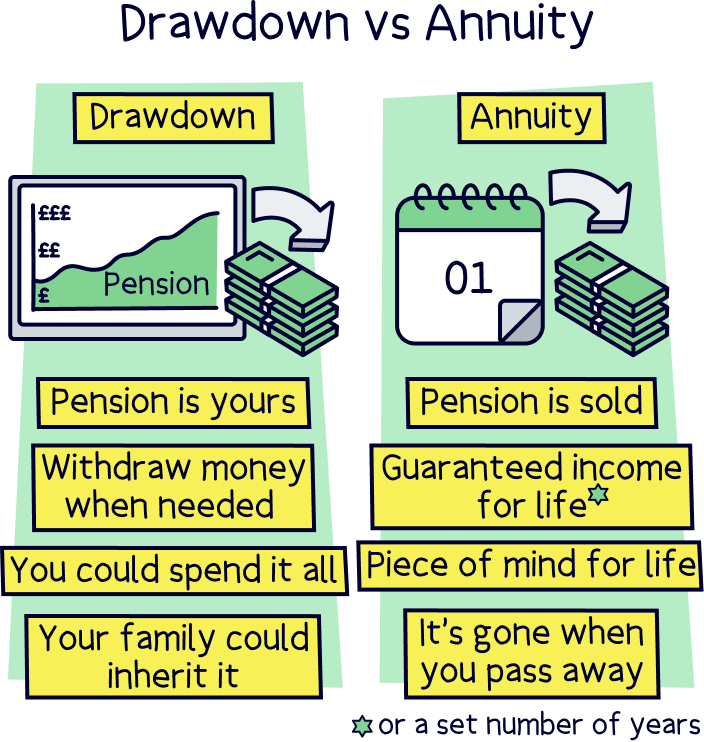
There we have it – pension tax relief for sole traders. There's some great news here. Basically, you won’t pay any tax on your pension contributions at all.
When you add money to your pension (from your personal money), you’ll get a massive 25% bonus from the government, added straight into your pension pot (to refund the 20% basic rate tax you've paid, or will pay).
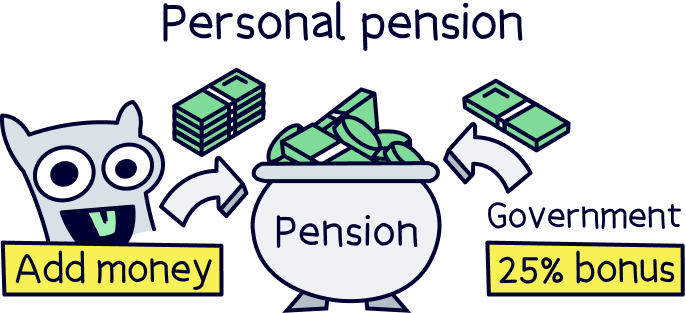
And if you pay 40% or 45% tax on your earnings, you can claim this back too (on the amount you’ve paid into your pension). This is done via your Self Assessment tax return at the end of the tax year.
PensionBee is our top pick, it’s easy to use and has low fees. Plus, get £50 added to your pension for free.
PensionBee is our top pick, it’s easy to use and has low fees. Plus, get £50 added to your pension for free.
We’d love to hear from you, and it will help others too.
PensionBee is our top pick, it’s easy to use and has low fees. Plus, get £50 added to your pension for free.